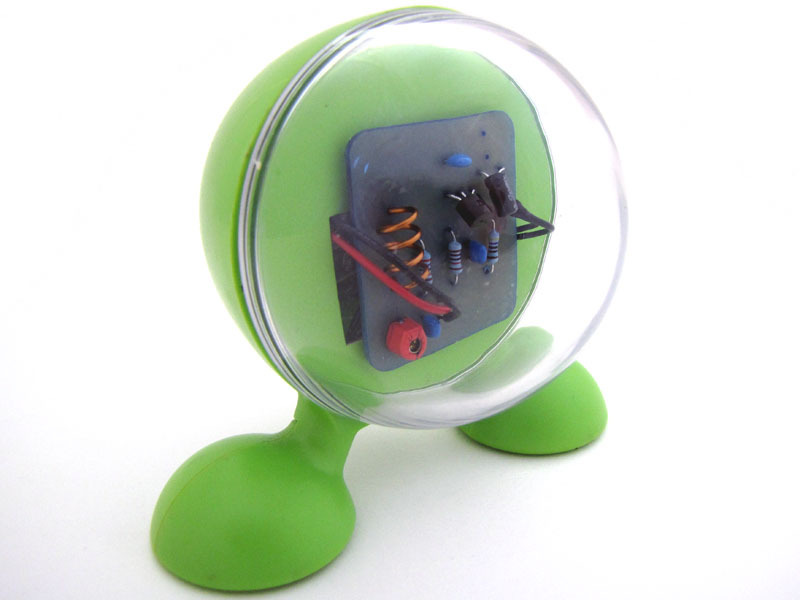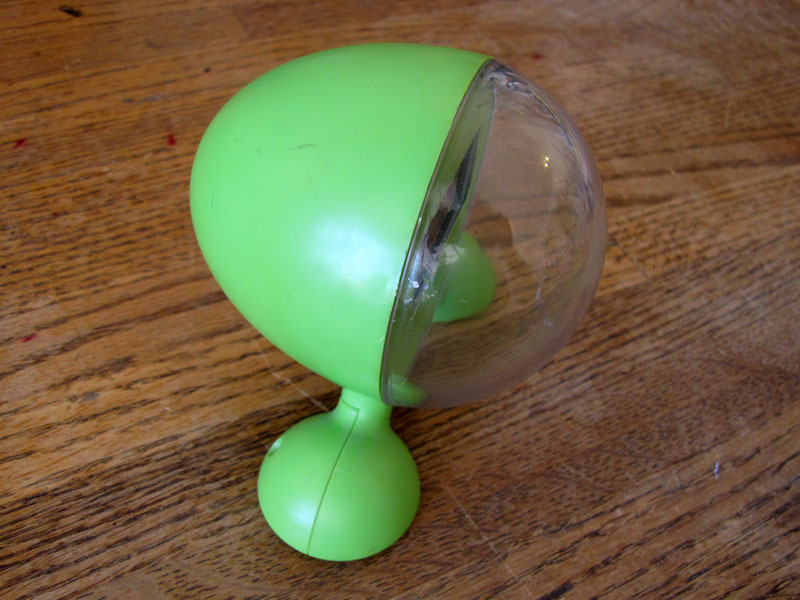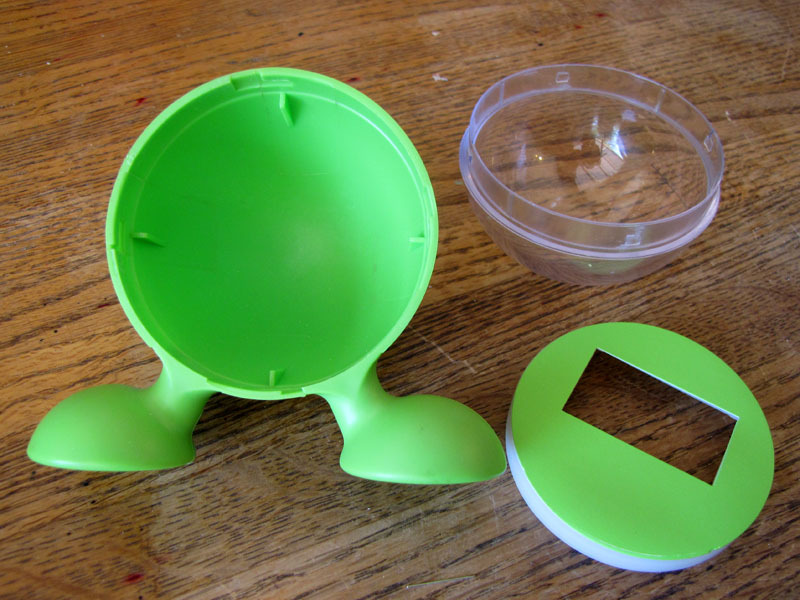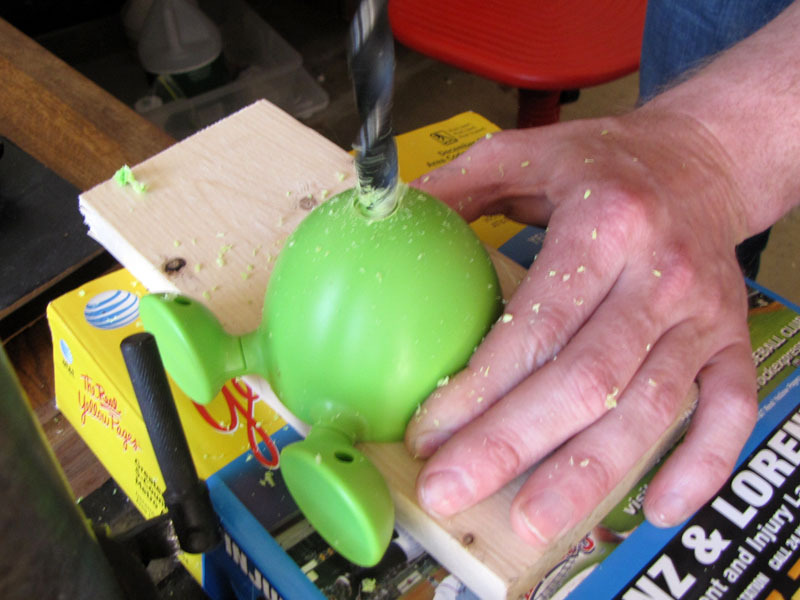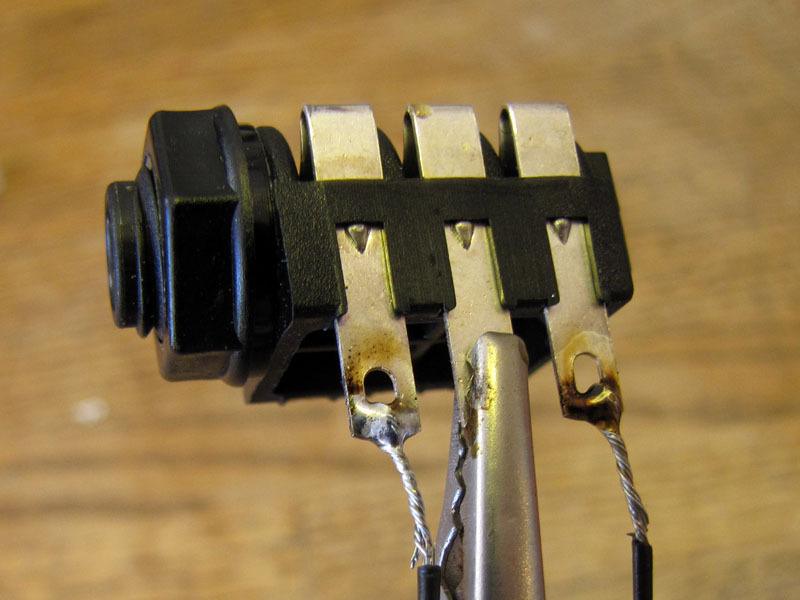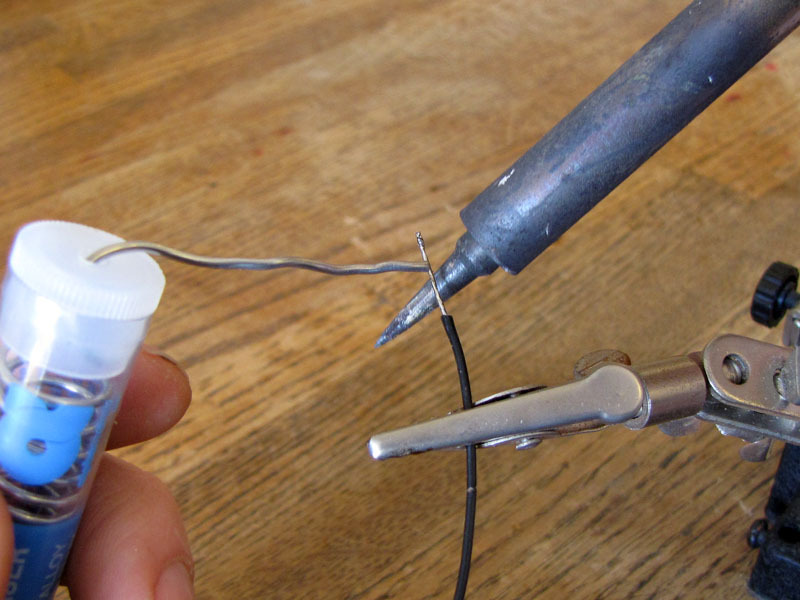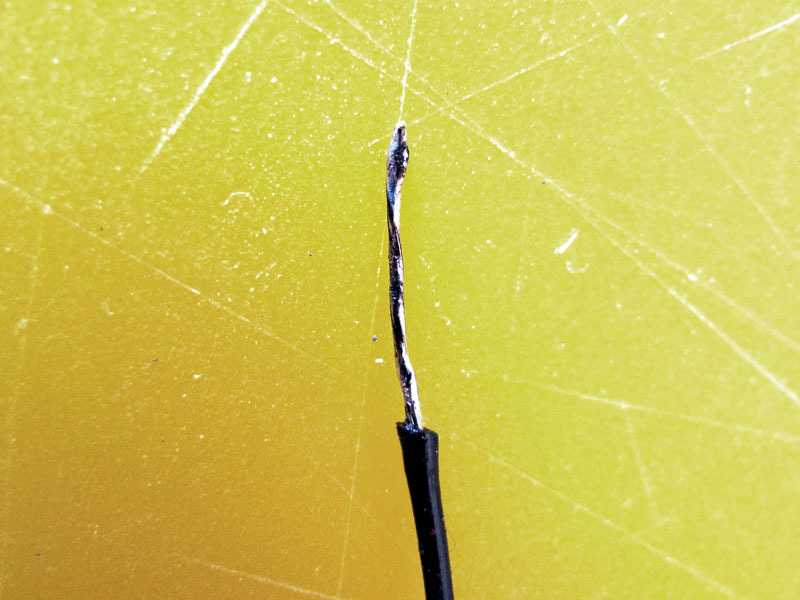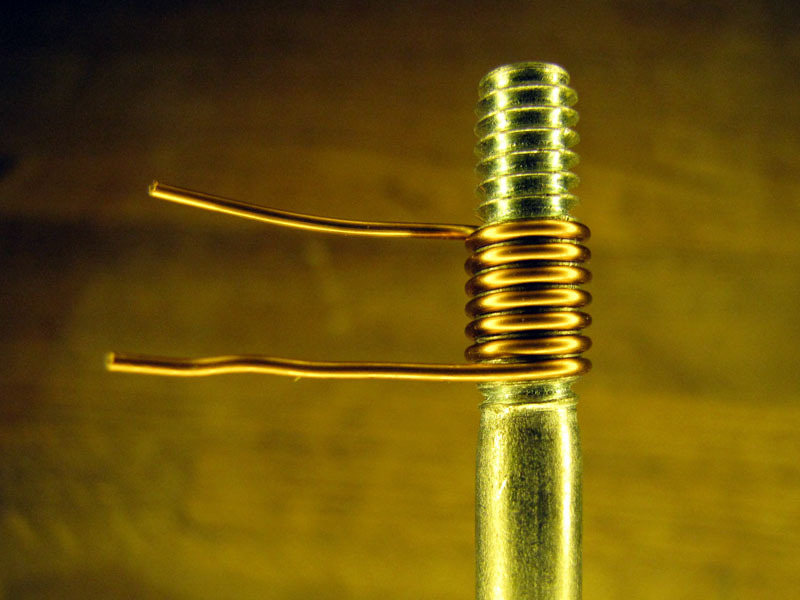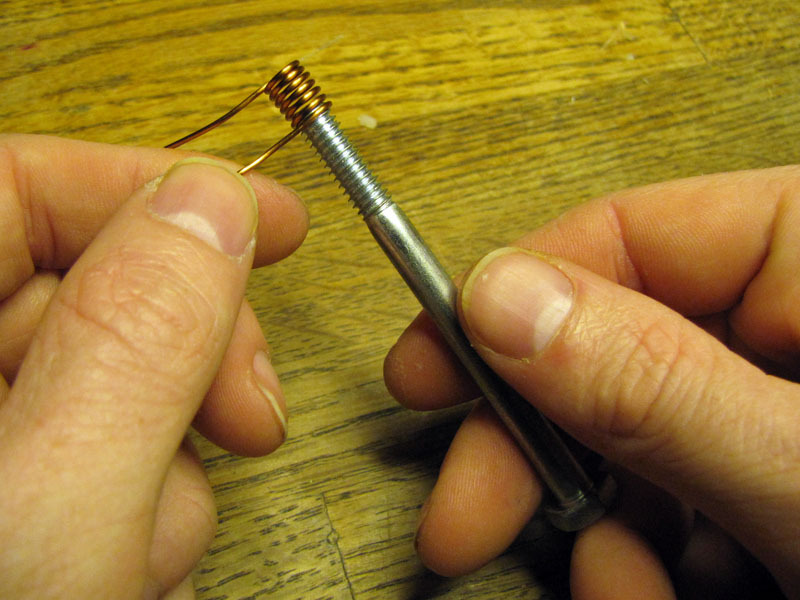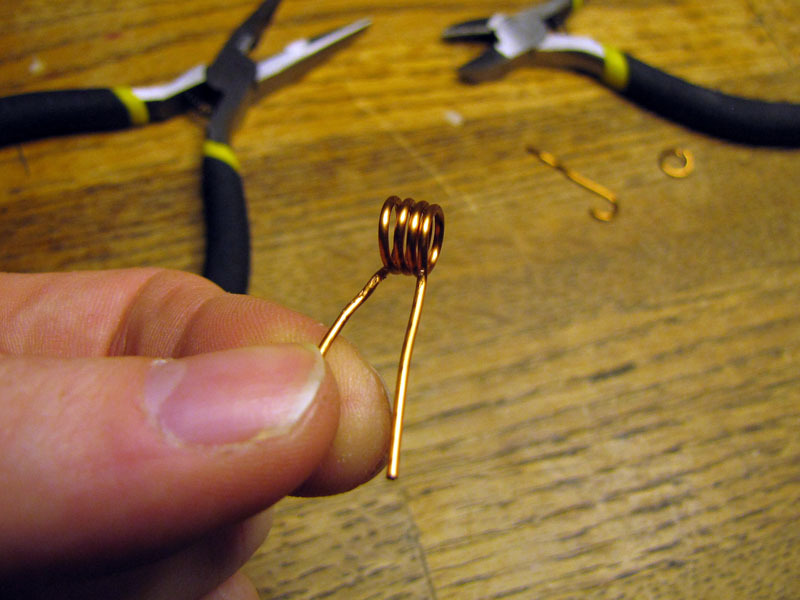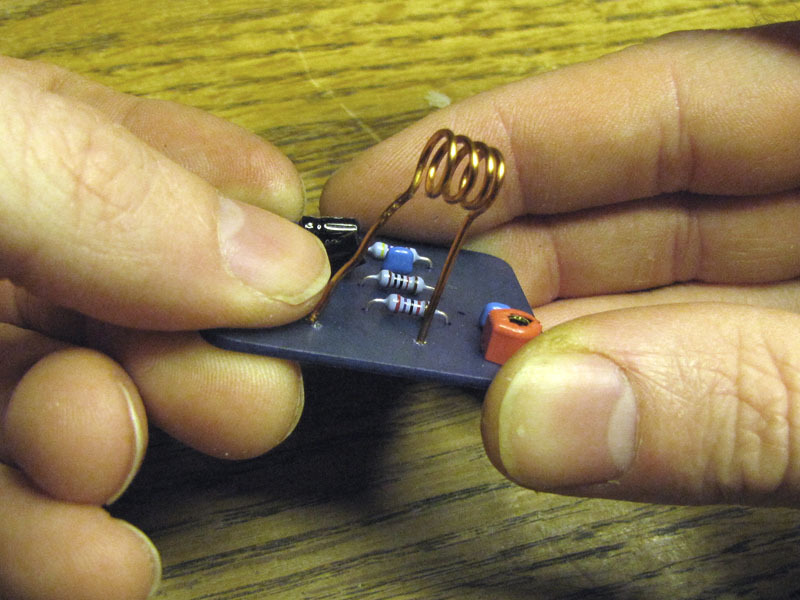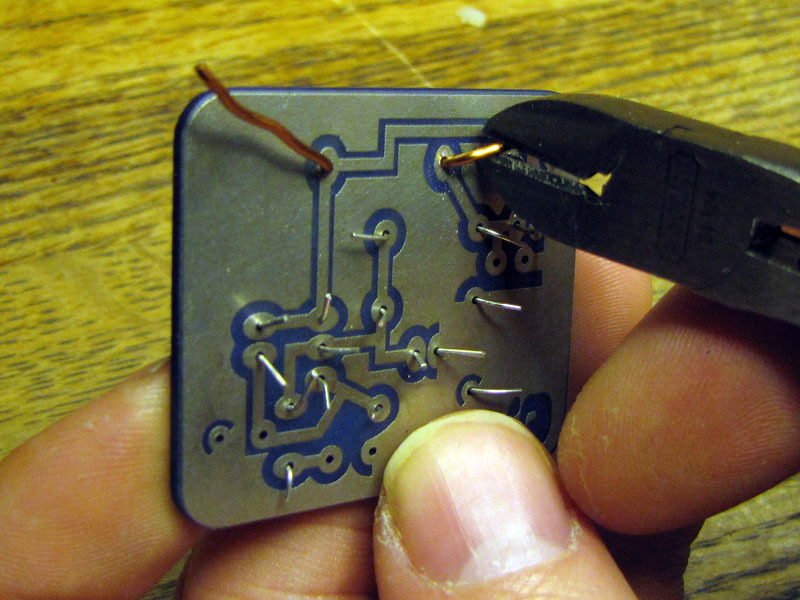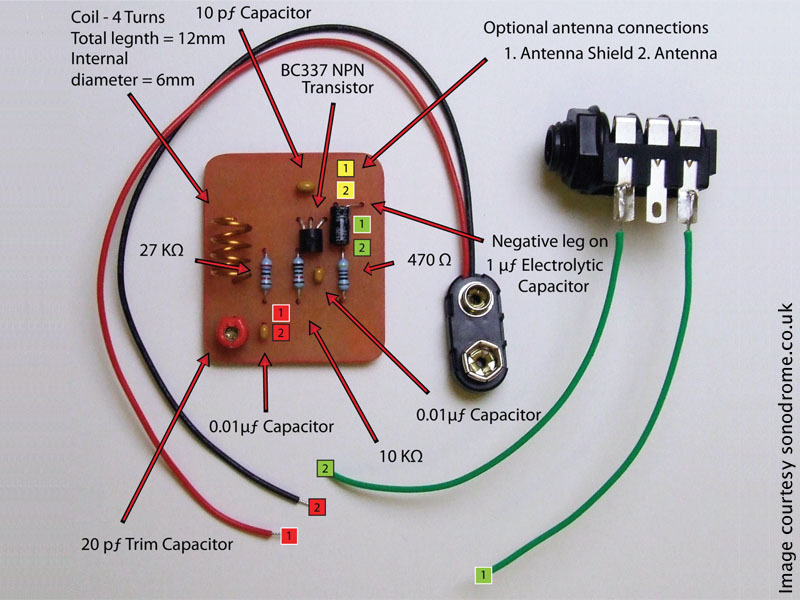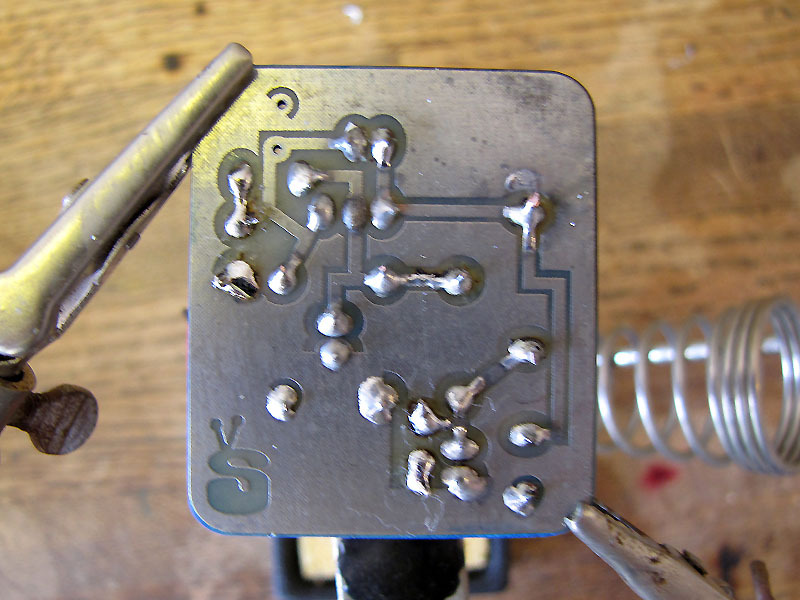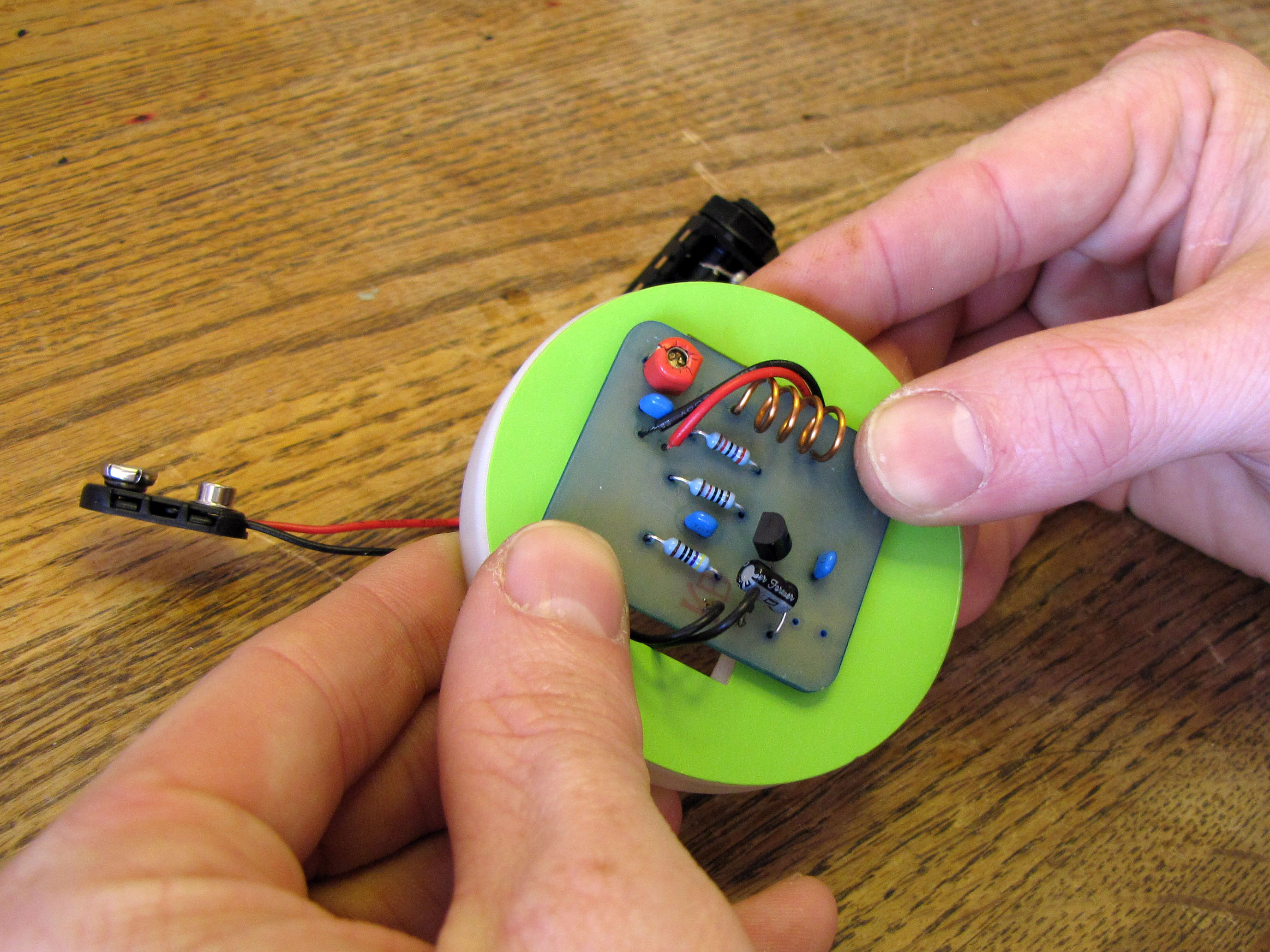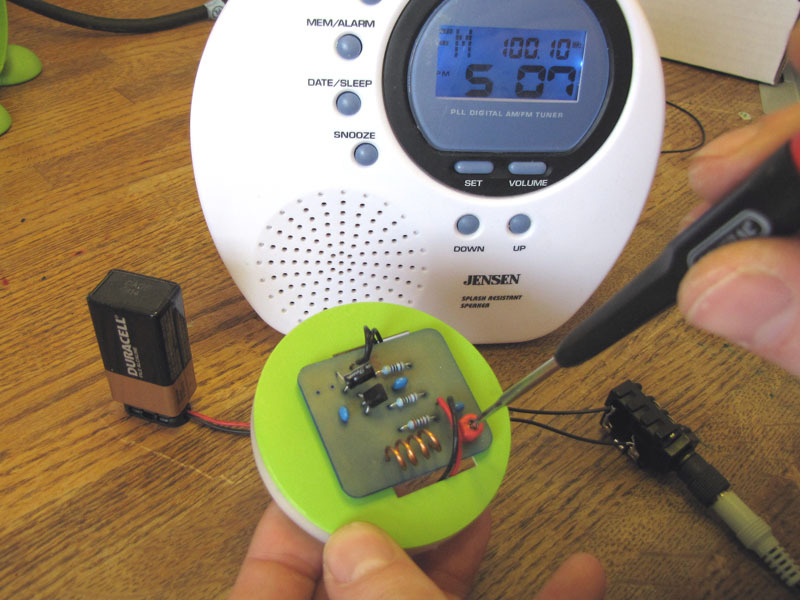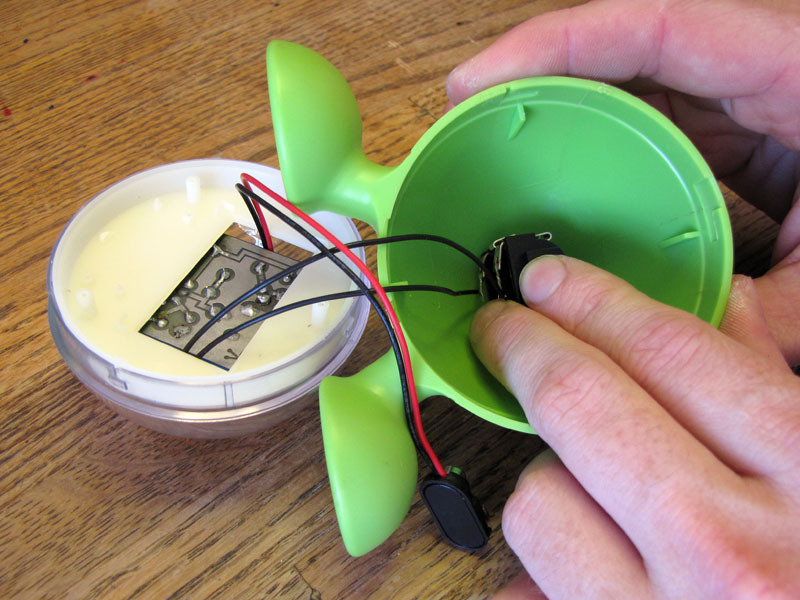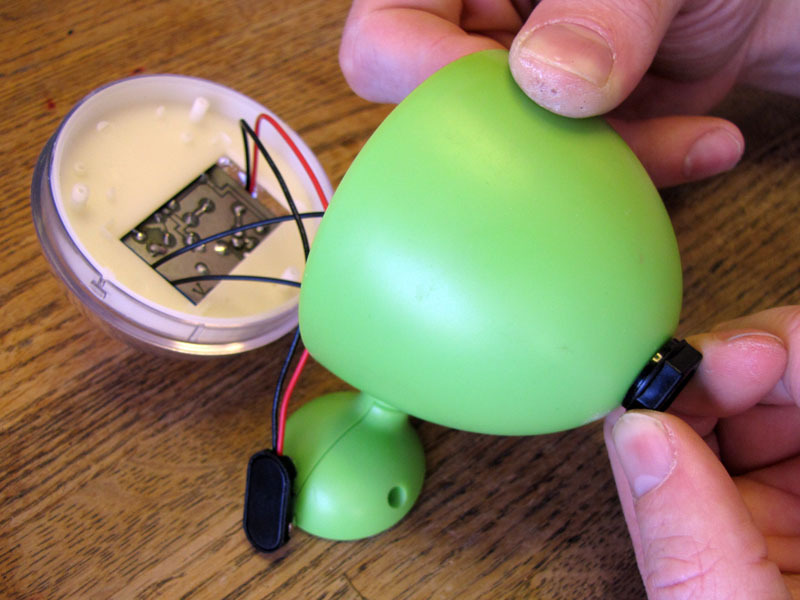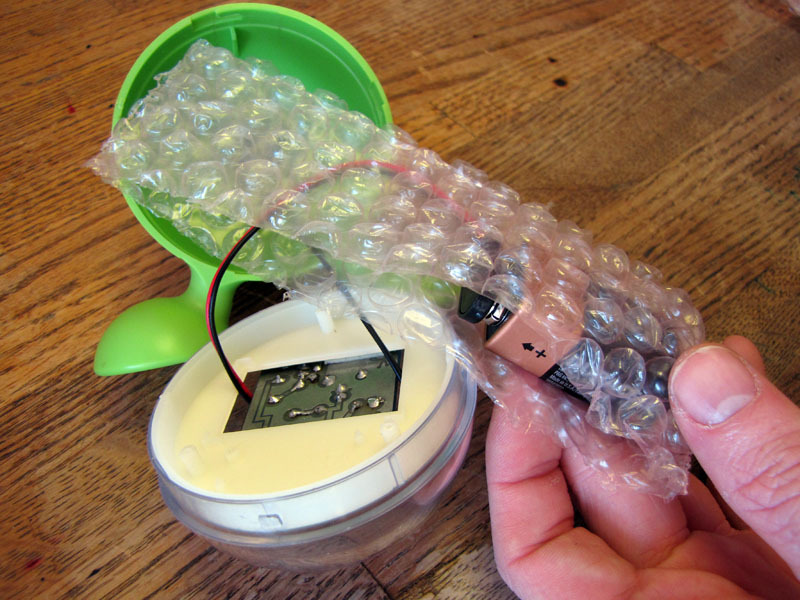This circuit is commonly credited to Japanese multimedia artist Tetsuo Kogawa. It takes audio input through a 1/4″ phono jack and, constructed as shown, without the optional antenna connections, will broadcast an FM radio signal about 30 feet.
This is the standard model of Mr. Kogawa’s simplest FM transmitter, which is slightly more complex than his most basic design in that it includes a trim capacitor to adjust the transmitting frequency. It can be powered by a 9V battery and uses a hand-turned copper coil.
I’m using the PCB and parts from Sonodrome’s old kit, but the circuit is extraordinarily simple and could be built on perfboard or on a panel almost as easily. Sonodrome provides free PCB art if you want to etch your own board. Kogawa himself provides instructions for building the transmitter on an unetched copper-clad panel.


